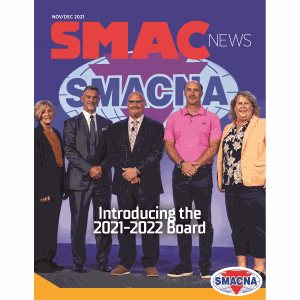Tax savings you don’t want to miss
Make sure you've exhausted all strategies to save or defer payment of one of your largest overhead items — income taxes.

Ronald J. Eagar
The purpose of a prequalification process is to evaluate whether a contractor is qualified to bid on a specific construction project. However, the bidding landscape was drastically altered by COVID-19, so it is increasingly important to strategically reposition the way you present your company.
As a challenging year comes to an end and construction companies begin tax planning, it is important to ensure you’ve exhausted all available strategies to save or defer the payment of one of your largest overhead items — income taxes.
There are several end-of-year income tax preparation strategies a contractor can utilize, including:
- Bonus depreciation or Section 179 elections – Available for fixed assets placed in service in the current year, both allow you to deduct the cost of qualified additions. A common tool to maximize the deduction under current tax law is to bunch necessary purchases in the years with the most projected income. Also, consider what fixed asset(s) you may need next year. It may make economic sense to purchase the asset(s) this year instead.
- Accounting Method – Contractors have several available accounting methods, which can vary by contract. Be sure the allowable (or required) method(s) was (were) chosen to create maximum tax deferral. The most common methods are cash basis, completed contract, and percentage of completion. The right method can create an income tax deferral for several years, leaving more cash on hand for day-to-day operations.
Once tax preparation begins, other strategies remain available until the day returns are filed, or even retroactively. Be sure to evaluate the following commonly overlooked opportunities:
Fuel tax credit. The excise tax included in the cost of gasoline funds the maintenance of highways and roads. The IRS offers a tax credit to contractors who purchase fuel for eligible off-highway business uses, such as stationary machines, bulldozers, earthmovers, etc.
The credit is computed by the rate per gallon that the IRS allows for each type of fuel. If a contractor purchased 10,000 gallons of undyed diesel fuel at the rate of .243, the credit would be $2,430. Over 10 years, this would multiply to a nearly $25,000 reduction of your tax obligation. Since this is a credit (not a deduction), it is a dollar-for-dollar reduction of your taxes. For contractors that are equipment-intensive, this can be a big savings.
Research & Development (R&D) credit. Commonly underutilized by contractors, the R&D tax credit can be applied to any new or improved business component whereby a process or product is created or improved, such as work performed on a structure to enhance construction performance, development of a new technique to increase efficiency, research of new construction methods due to site conditions, and creation of a new tool or part.
A four-part test determines eligibility:
- Permitted purpose: Have you improved upon the functionality, performance, reliability or quality of a product or process?
- Technological in nature: Does the activity fundamentally rely on science, technology, engineering or math?
- Elimination of uncertainty: Is there a level of uncertainty that the R&D is attempting to reduce?
- Process of experimentation: Have you evaluated solutions through modeling, simulation or trial and error, even if the experiment was unsuccessful?
A product or process that meets all four criteria likely qualifies as R&D. Like the fuel credit, this is a dollar-for-dollar reduction of taxes and can be a substantial year-after-year savings.
 Section 179D deduction. The Energy-Efficient Commercial Building Deduction (179D) was made permanent this year. This deduction (up to $1.80 per square foot) is achieved through the installation of energy-efficient HVAC, building envelope and lighting assets. It applies to new construction and renovation of qualifying commercial buildings and apartment buildings of four stories or more.
Section 179D deduction. The Energy-Efficient Commercial Building Deduction (179D) was made permanent this year. This deduction (up to $1.80 per square foot) is achieved through the installation of energy-efficient HVAC, building envelope and lighting assets. It applies to new construction and renovation of qualifying commercial buildings and apartment buildings of four stories or more.
Employee Retention Credit (ERC). If your business has less than 500 employees and was partially or completely shut down during COVID-19 or suffered more than a 20% revenue decline in 2021 (or 50% in 2020), don’t overlook this payroll tax credit. Revenue declines are measured quarter by quarter, compared to same quarter in 2019. Combined, the 2020-Q4 and 2021-Q1-Q4 ERC can equate to up to $33,000 per employee. Even if these quarters have passed, you can still amend Form 941 and request refunds.
It’s never too early to start planning tax strategies for 2021 and beyond. For information on more tax savings opportunities, contact reagar@grassicpas.com.
Published: December 9, 2021
IN THIS ISSUE
A New Day
SMACNA welcomed attendees back in person with new guidance, lessons and insight on how contractors can improve themselves and their businesses after two years of pandemic-induced changes.
Aaron Hilger Named CEO of SMACNA
Beginning Jan. 1, 2022, Aaron Hilger will assume the role of SMACNA’s CEO. Vincent Sandusky, who earlier in the year announced his retirement, has served as SMACNA’s CEO since 2008.
ARCHITECTURAL: Back on Track
Landmark train station is reborn thanks to Ford Motor Co. and CASS Sheet Metal
Capitol Hill Update: Infrastructure Law a Big Win for SMACNA Contractors
Pres. Biden signed into law the largest infrastructure investment package seen in decades, 1.8 trillion Build Back Better Act passed House, and a looming government shutdown was barely averted.
From the President: Did You Get Better Today?
My transition to SMACNA President after two amazing years with Angie Simon serving in this role is my opportunity to help our industry grow more competitive.
How to win the war for talent
There are firms that find and retain top talent. What makes those firms different? How can your business become a talent destination?
HVAC: Phoenix is booming
Manufacturing, technology and semiconductor sectors are driving economic growth
INDUSTRIAL: Heavy work
Steel town industrial contractor is a heavy metal hit
Key highlights from FMI's 4th Quarter, 2021 North American Engineering & Construction Outlook:
LaGuardia Transformation
Sheet metal and HVAC contractors play key role in LaGuardia redevelopment.
RESIDENTIAL: Coming up short
Residential contractors face equipment delays and price spikes as the HVAC industry adjusts to ongoing inventory problems
Six Benefits to Adopting New Software Technology
Tax savings you don’t want to miss
Make sure you've exhausted all strategies to save or defer payment of one of your largest overhead items — income taxes.


